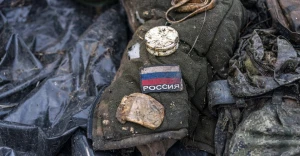
ISW outlines why Ukrainian counteroffensive near Bakhmut is successful
The Ukrainian Armed Forces' counteroffensive near Bakhmut has fulfilled the main tasks set by the Ukrainian army command
Analysts at the Institute for the Study of War (ISW) shared the information in their recent report.
According to Ukrainian officials, Russian troops have concentrated most of their reserves in the Bakhmut area and slowed down the Ukrainian counterattacks over the past day.
Thus, according to Deputy Defense Minister of Ukraine Hanna Maliar on May 19, Russian forces concentrated most of their reserves in the Bakhmut direction, which slowed down the pace of the Ukrainian offensive. She added that the Ukrainian Armed Forces continue counterattacks on the northern and southern outskirts of Bakhmut and have advanced 500 meters on one flank and 1,000 meters on the other.
Some Russian bloggers welcomed the slowdown in the Ukrainian advance and claimed that the Ukrainian army was allegedly unable to withstand sustained localized counterattacks in the Bakhmut area.
However, Russian forces on the flanks of Bakhmut are likely to remain weak, ISW experts say.
On May 19, the founder of the Russian Wagner PMC Yevgeny Prigozhin continued to criticize the Russian 4th Motorized Rifle Brigade (2nd Army Corps of the LPR) for retreating from the defensive lines southwest of the village of Ivanivske (6 km west of Bakhmut).
"Ukrainian counterattacks near Bakhmut have notably likely eliminated the threat of a Russian encirclement of Ukrainian forces in Bakhmut and forced Russian troops to allocate scarce military resources to defend against a limited and localized offensive effort, as Ukrainian command likely intended," analysts at the Institute for War Studies wrote.
-
Ukrainian Defense Minister Oleksii Reznikov said that Russia lost a total of about 70,000 killed and wounded in attempts to capture Bakhmut.
- News















































